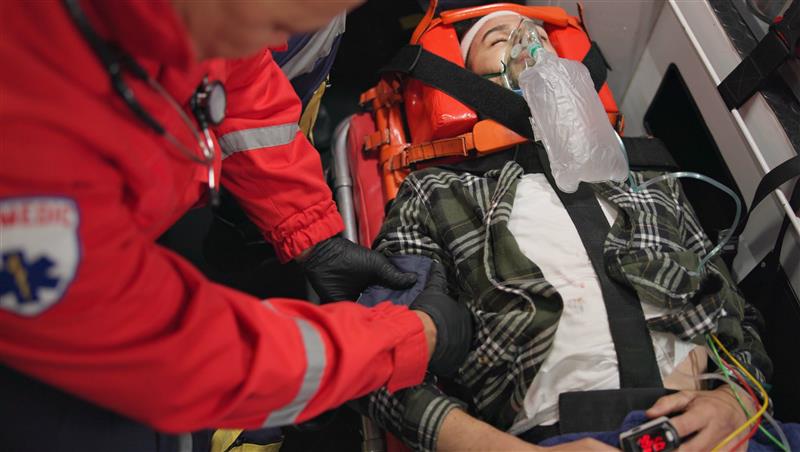
When people think about emergency medical services (EMS), they often hear the terms EMT and Paramedic. While both roles are vital in providing emergency care, there are significant differences in their responsibilities, training, and skills. Understanding the difference between an EMT vs Paramedic can help anyone looking into an education in EMS or simply wanting to know more about the lifesaving care these professionals provide.
EMT vs. Paramedic: Key Differences
The fundamental difference between EMTs and Paramedics lies in the level of medical care they are trained to offer. EMTs (Emergency Medical Technicians) provide basic life support (BLS), while Paramedics are trained to provide advanced medical life support (AMLS).
- EMTs focus on the essentials of emergency medical care. They are trained to assess patients, administer CPR, control bleeding, and provide oxygen. EMTs are often the first healthcare professionals to arrive at the scene of an emergency and are responsible for stabilizing the patient before transporting them to a medical facility for further care. Their training equips them with the knowledge to handle most common medical emergencies, including trauma and cardiac events.
- Paramedics, on the other hand, offer more advanced medical interventions. In addition to performing all of the tasks that an EMT can, Paramedics can administer medications, start intravenous (IV) lines, perform advanced airway management (such as intubation), and interpret electrocardiograms (EKGs). Paramedics are essential when patients require more complex treatment during transport.
Both EMTs and Paramedics work together in emergency situations, but Paramedics have more advanced training and can perform higher-level procedures that EMTs are not authorized to perform. It’s important to note that the scope of practice for both EMTs and Paramedics may vary based on state regulations and local protocols.
EMT Training
Before becoming an EMT, individuals must attend EMT school to complete the necessary training. EMT programs teach the basic skills needed to provide emergency care. The primary goal of EMT training is to prepare students to handle a wide variety of emergency situations, stabilize patients, and transport them safely to a hospital.
EMT training typically covers:
- Basic trauma care
- CPR and defibrillation
- Patient assessment
- Oxygen administration
- Safe patient transport
The training involves a mix of classroom learning and hands-on clinical practice. Students learn how to assess patients, control bleeding, provide basic airway management, and ensure safe and effective transportation. EMTs must complete a state-approved course and pass certification exams to become licensed.
The duration of EMT training can vary, but it usually takes about six months to complete a basic EMT program.
Paramedic Training
To become a Paramedic, additional education and training are required after completing EMT certification. Paramedic school builds upon the foundational skills of EMTs and introduces more advanced medical procedures. The goal is to equip Paramedics with the skills and knowledge needed to handle life-threatening medical emergencies that require more than basic care.
Paramedic training typically includes:
- Advanced cardiac life support (ACLS)
- Medication administration
- Advanced airway management, including intubation
- Trauma care and critical care transport
- EKG interpretation and management of cardiac emergencies
Paramedics receive more in-depth education in anatomy, physiology, and pharmacology, enabling them to provide advanced care in a pre-hospital setting. They also undergo extensive clinical rotations and field internships, allowing them to apply their skills in real-world situations under the supervision of experienced professionals.
How Long Does It Take to Become a Paramedic?
One common question is, “How long does it take to become a Paramedic?” The length of time required depends on the individual’s prior experience and the program’s structure. After completing EMT training, it usually takes an additional 12 to 24 months to become a certified Paramedic, based on program structure and length. This timeframe includes classroom instruction, hands-on clinical practice, and field experience.
Paramedic programs are more rigorous than EMT programs, reflecting the higher level of care and responsibility that comes with the role. After completing a Paramedic program, students must pass a certification exam to become licensed.
The Importance of Both EMTs and Paramedics
Both EMTs and Paramedics are critical to the EMS system. EMTs often act as the first point of contact for patients in emergencies, providing initial assessments and basic care. Their swift actions can make a significant difference in patient outcomes. Meanwhile, Paramedics bring a higher level of medical expertise, performing advanced procedures that can save lives when patients are critically injured or ill.
In many emergency situations, EMTs and Paramedics work together as a team. EMTs may initiate patient care, and Paramedics may take over once more advanced treatment is necessary.
Why Understanding the Difference Matters
Understanding the difference between an EMT and a Paramedic is important for anyone interested in emergency medical services or healthcare in general. Whether you're considering a career in EMS or want to understand the roles of the professionals who may respond to a medical emergency, knowing the distinctions between these two vital positions can offer valuable insight into how emergency care operates.
Conclusion
The difference between an EMT and a Paramedic lies in the level of care they provide. EMTs deliver basic life support, while Paramedics are trained to perform advanced medical procedures in critical situations. ECPI University offers a program that prepares you with the knowledge and skills for both EMTs and Paramedics, with eligibility to pursue certification exams required by state or national authorities.

